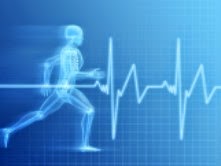Under the wide and starry sky
Dig the grave and let me lie.
Glad did I live and gladly die,
And I laid me down with a will.
This be the verse you grave for me;
"Here he lies where he longed to be,
Home is the sailor, home from sea,
And the hunter home from the hill."
- - Requiem by Robert Louis Stevenson
Somehow these words of the poet have come to me, perhaps from school days, as I made the arrangements for my husband's body to finally rest under the beautiful Big Sky in Montana.
 |
| Red Jasper "The Warrior Stone" |
Yes, the last battle has been fought in a war that he and his courageous, wonderful physicians ultimately could not win. It became clear that it was no longer necessary for him to hunt, to seek more help from medicine or another procedure. He could return from the sea of life, where in 2017 he was hospitalized five times, and take his last breaths as he desired, in his own home.
On February 28th, he underwent a high risk, technically challenging fourth surgery to replace his failing bovine aortic valve once again. The surgery was perfect, he did well, and came home to begin what seemed like a routine recovery. However, he abruptly went into kidney failure a little over two weeks after surgery, coming to the brink of death before fighting back and returning home. There was no explanation for the kidney crisis then, but in retrospect I believe it was the extreme response of his immune system to a foreign invader, bacteria that entered his blood stream at the time of surgery. In the course of time, the bacteria was identified and he underwent multiple rounds of treatment, most recently about 8 weeks continuously. Removing the infected valve surgically was not an option - he would not come off the operating table alive if it were attempted again. He was still in the fight, however, and an expert in valve-in-valve TAVI offered him a procedure to insert a new valve into the infection-damaged one. However, it became apparent that the infection was still present, and it viciously destroyed the electrical node near his aortic valve. He was in complete heart block, and it was not hard to understand it was time to leave the battle to others with BAV. This heart warrior, who underwent 4 open heart surgeries and suffered a major stroke from valvular strands, had been given permission to leave the fight.
Since he has left me, our beloved Dr. Rose and many others have remarked on how amazing it was that he was able to go through so much: 4 open heart surgeries and the stroke over a period of 27 years. He was hospitalized 5 times in 2017. It is true that he was gifted with great physical strength, and his heart muscle was strong. Above all, he had learned that his help and strength came from God, who had gifted him with life, breath, and all things. Over and over, I saw him rise above the pain from the infection and the painful things done to him, things necessary in order to help him.
But they that wait upon the Lord shall renew their strength;
they shall mount up with wings as eagles;
they shall run, and not be weary;
and they shall walk, and not faint.
- Isaiah 40:31
This verse from the Christian Bible has beautiful imagery, as does this picture of a soaring eagle. As I walked beside my husband every step of this journey, every battle he fought, I know that these words are not just beautiful, they are the answer to how he continued to cherish the life God gave him, regardless of what happened to him, until the moment it was time to go Home. I write this here because I know he would want to tell you this, if you should ask how he was able to do the things he did.
The bacterial infection caused his new bovine aortic valve to leak, and once again he had a heart murmur. When at last his heart stopped beating, the murmur stopped too, never to be heard again.
My beloved, the battles are over,
the murmur is gone, forever.
Soon your body will rest
under the wide and starry sky,
as you wished.
~Arlys





















